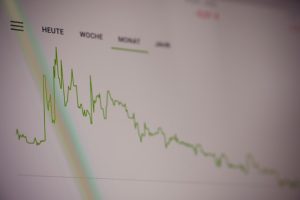Forex traders often get carried away by the fast-paced action of lower time frames, such as 5-minute or 15-minute charts. However, trading on higher time frames, such as daily or weekly charts, can offer more reliable signals and less stress. In this article, we will explain the benefits of trading higher time frames and provide some tips on how to do it effectively.
What are higher time frames?
Higher time frames refer to charts that display longer periods of time, such as daily, weekly, or monthly intervals. For example, a daily chart shows the price action of a currency pair over the course of one day, while a weekly chart shows the price action of a currency pair over the course of one week.
Why trade higher time frames?
Trading on higher time frames has several advantages over lower time frames:
1. More reliable signals: Higher time frames tend to produce stronger and more reliable signals, as they filter out much of the noise and random fluctuations that occur on lower time frames. This means that the signals generated by higher time frames are more likely to be accurate and profitable.
2. Less stress: Trading on lower time frames can be very stressful, as the price action can be very fast and erratic. Trading on higher time frames, on the other hand, is much calmer and less stressful, as the price action is smoother and more predictable.
3. More time: Trading on higher time frames requires less time than trading on lower time frames, as signals are generated less frequently. This means that traders can spend more time analyzing the market and making informed decisions, rather than constantly monitoring their screens for new signals.
How to trade higher time frames
Here are some tips on how to trade higher time frames effectively:
1. Use longer-term indicators: When trading on higher time frames, it is important to use longer-term indicators that are better suited to these time frames. For example, a moving average with a longer period can provide a more accurate view of the trend on a daily or weekly chart.
2. Wait for strong signals: When trading on higher time frames, it is important to wait for strong signals that are confirmed by multiple indicators. This means that traders should be patient and wait for the right opportunities, rather than trying to force trades.
3. Set wider stop-losses: Trading on higher time frames requires wider stop-losses, as the price action can be more volatile than on lower time frames. Traders should set their stop-losses at a level that allows for some room for the price to fluctuate, without being too far away to be ineffective.
4. Let profits run: When trading on higher time frames, it is important to let profits run and not take profits too soon. This means that traders should set their take-profit levels at a level that allows for some room for the price to continue moving in their favor.
5. Be disciplined: Trading on higher time frames requires discipline and patience. Traders should have a clear trading plan and stick to it, even if it means waiting for days or even weeks for the right opportunity.
Conclusion
Trading on higher time frames can be a valuable strategy for forex traders who want to reduce stress, increase reliability, and make more informed trading decisions. By using longer-term indicators, waiting for strong signals, setting wider stop-losses, letting profits run, and being disciplined, traders can successfully trade on higher time frames and achieve consistent profits.






